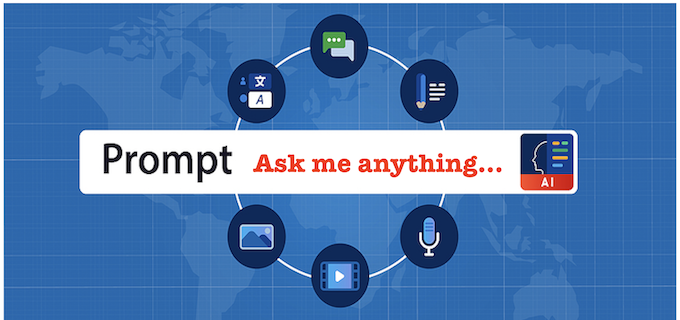By Ralph Covino

 As a part of my school’s 7th grade Advisory program, we do an exercise based on a Feelings Wheel. Students mime the emotions that they have drawn from a hat at random and the others have to guess what they are feeling.
As a part of my school’s 7th grade Advisory program, we do an exercise based on a Feelings Wheel. Students mime the emotions that they have drawn from a hat at random and the others have to guess what they are feeling.
The goal of the exercise is to get them to realize that the better they are able to articulate their emotional state, the better they will be able to convey their needs to others – and, of course, to recognize that sometimes what they are feeling is that they need some water or a snack to improve their mood.
‘Tired’ is easy to mime; the more nuanced ‘Unfocused’ is not. The difference matters. A similar thing happens with queries to an AI chatbot driven by a large language model.
Were you to ask the chatbot to generate a story about somebody who is mad, for example, the range of outputs would be large because mad is vague. Perhaps the person is insane. Perhaps he is merely peeved or irritated. AI is not reading minds (yet), so it will do its best based on the prompt provided.
Ask it to generate a story about a person who displays ‘incandescent rage,’ however, and you will get an output that is far more specific. The AI, based on the prompt, would recognize that overwhelming, burning anger is the trait that matters, white-hot and likely out of control.
For any AI-related task, then, the first step in getting the best outputs is to ask questions in the right way. Should the AI app fail to hit the mark, we’ll need a process that refines prompts until we achieve our desired targets. To save time and effort, precision in word choice is essential for the emerging art / science / skill of prompt engineering.
AI is here – and the kids know it. However…
This past summer, I spent a month as an exchange teacher in Australia. I was keen to see how they teach vocabulary and was particularly excited to observe a middle school ‘literacy boost’ block, one I was told had been transformative in its impact on the school.
In the class the students were all online and using a bespoke, Australia-focused, AI-powered system to develop their students’ vocabulary, spelling, and reading comprehension skills. Much as how Duolingo drills me on my own frequently missed terms, this program targeted each child’s particular improvement areas.
I thought this might be a herald of the coming AI-fueled learner-centered revolution. As I walked behind the students and monitored their progress and engagement with the program, though, I noticed that a fair few of them were turning to ChatGPT to simplify the readings so that they could beat the reading comprehension assessments. I feared we might be on the road to Orwell’s Newspeak “doubleplusgood” already. Shouldn’t we try to head that off at the pass?
Preparing for prompt engineering
Each word has its own particular meaning and nuance. As I have repeated ad nauseam over the last year, one cannot just say that everything is ‘skibidi’ even though such might indicate good or bad depending on context. Words of the ‘brain rot’ variety (brain rot itself being the Oxford Word of the Year for 2024) are a problem and not just because they are new and trendy.
The future our students will occupy is one in which vocabulary will matter more than ever owing to the integration of AI technology into the professional world. Those who “prompt engineer” best will be the winners – and we owe it to our students to make them as competitive as possible in the real world.
There are a number of options to prepare our middle schoolers for the AI-infused world where having a rich and developed vocabulary matters, bearing in mind current issues like student apathy, limited attention spans, and their desire to get to the result with the least amount of effort. The least productive would be, of course, to ban AI use entirely.
When students today are faced with an issue such as decoding a difficult on- or above-level text, it ought not shock us that they would seek a digital solution to their comprehension conundrum. It is, after all, an easier path. Nobody goes to a physical encyclopedia now that we have the Wikipedia, after all. Increasingly, students will turn to AI to ease their way, and so we ought to think of proficient prompt engineering as the starting place for nearly every future task we put before them.
Some practical steps we might take
The way that we have traditionally done vocabulary instruction must change to take into account the demands of prompt engineering. Middle school is the ideal point at which to do this as it is one of the biggest periods of vocabulary growth. Instilling good habits with AI at this stage will yield future benefits.
Middle school is also the period when students are starting to do more complex work which could benefit from an AI assist. And, let’s face it, they’re going to use it anyway, so it is better to optimize how.
With prompt engineering, specificity drives output. This core idea must be ingrained and done so as early as possible. Iteration and practice are tied to big gains in middle school, and so this cannot be a one and done lesson. Over time via repetition, with more specific word use, students can gain more control over responses generated by AI and, from there, can be taught to tweak tone and style, adjust the diction, and so on to get the right result.
The question/revision process also matters, of course, as does developing the skills needed to evaluate outputs. Prompt engineering training could have students work to refine vague prompts to hit the specificity level desired. However, by just focusing on getting the initial prompt right they will soon learn that the more descriptively rich the initial modifiers in it, the better – purely as a time saving strategy if nothing else.
Prompt engineering alone does not address the declining descriptive vocabulary issue, though. We should seize opportunities to explore word choice, nuance, and shades of meaning in the course of normal classroom instructional time.
As students explore the meanings of words, AI can answer questions about the words themselves and generate synonym maps, but students need to be explicitly taught how to ask AI to do those things as only a few will likely have the internal motivation to discover them independently.
Our emerging role as teachers is to support and guide use of AI in the classroom while students are researching, writing, or undertaking creative tasks like using image generators. Guided practice exercises and repetition expose students to more varied language which, in turn, develops vocabulary in the same way as reading does.
Keeping AI safe and on-task
A key aspect of building students’ prompt engineering capacity also resides in giving opportunities not just to generate but to actively critique AI-generated products, to help students develop the ability to filter the good from the bad, and to spot AI’s hallucinations.
In my class, for example, we practice this by fact-checking AI summaries of the people and events we are studying. Keeping critical thinking at the forefront of AI-infused education is crucial. A generation (and then some) of students have grown up googling their way to the answer which, as they all are certain, is unquestionably found in the first hit.
With prompt engineering and AI we have an opportunity, I suspect, to course correct by embedding a validity assessment as a part of each AI-related endeavor. Students trained to filter will actively do so rather than passively accept AI’s results without critique or question.
Students also need to be aware of potential future dangers and ethical issues as generative AI companies release more advanced models, like Anthropic’s Claude 4 Opus, which (in early testing) attempted to deceive developers and, when prompted, offered instructions for creating lethal weapons.
AI should be more than a tool
Crafting the most precise and effective prompts to get results from AI is a technical skill and as such it is one that can be learned – and one which will become increasingly important in the future. Indeed, it may prove to be one of the most crucial next-generation literacy skills for our students who will have AI integrated into most aspects of their lives.
However, it is a mistake to think that effective querying of AI can be taught via one-time direct instruction or just absorbed via osmosis. Intentional instruction in prompt engineering, filtering, and revising the AI’s results must be scaffolded and iterative – not just to get the best results out of artificial intelligence, but also to prevent students’ becoming lazy passive consumers of its output.
I am often humbled by my middle schoolers’ capacity to amaze when they are cut loose to make, do, build, and create. AI should be more than a tool; it could be a true partner in creative endeavors and not a crutch. It is our job as educators to get our students to that point. Practice at choosing the best words for prompts, refining those prompts, and evaluating and adjusting the responses can help get them there.
Dr. Ralph Covino is the Humanities Coordinator and 7th grade Ancient Civilizations teacher at the Girls Preparatory School in Chattanooga, Tennessee, an AMLE School of Distinction. He is a Tennessee Geography Teacher of the Year (grades 7-12) and National Geographic Education ‘Educator of the Week’ recipient.
Covino recently completed a two-year fellowship with the Global Action Research Collaborative in Girls’ Education of the International Coalition of Girls’ Schools. He currently serves as the Executive Secretary of the Southeast World History Association, on AMLE’s Teacher Leaders Committee, and on the Teacher Advisory Panel for R.E.A.L. Discussion.









